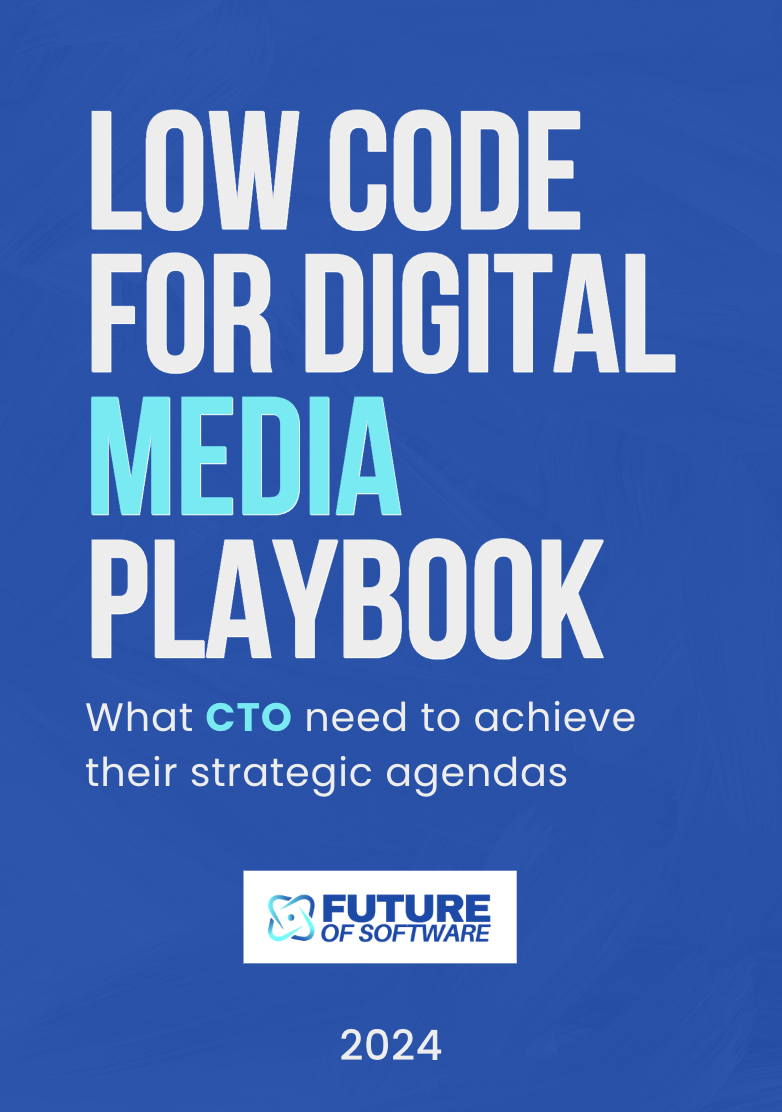
Emerging Trends in Blog Article Management
Shifting Paradigms in Content Management
As we approach 2025, the landscape of blog article management is undergoing significant transformation. The digital marketing sphere is rapidly evolving, driven by technological advancements and changing user expectations. Web studios are at the forefront of this evolution, adapting to new trends that emphasize efficiency, personalization, and sustainability.
Data-Driven Content Strategies
One of the most notable trends is the increasing reliance on data to inform content strategies. Agencies are leveraging analytics to understand user behavior and preferences, allowing for more targeted and effective content marketing. This data-driven approach not only enhances user experience but also strengthens brand identity by aligning content with audience needs.
Embracing New Technologies
Technological innovations are reshaping how content is created and managed. The integration of artificial intelligence and automation tools is streamlining content creation processes, enabling web design and development teams to focus on creativity and strategy. For instance, innovative headless CMS solutions are gaining traction, offering flexibility and scalability that traditional systems lack.
Enhancing User Engagement
Personalization is becoming a cornerstone of effective content strategies. By tailoring content to individual user preferences, web studios can significantly boost engagement and retention. This trend is supported by advancements in digital marketing tools that allow for precise targeting and customization, ensuring that each blog post resonates with its intended audience.
Adapting to Changing User Expectations
As users become more discerning, web studios must prioritize user-centric design and development practices. This includes adopting best practices in website design and user experience, such as implementing dark mode options and optimizing for mobile devices. By staying attuned to user expectations, agencies can deliver content that not only informs but also delights.
The Role of AI in Content Promotion
AI's Transformative Impact on Content Promotion
In the rapidly evolving landscape of digital marketing, artificial intelligence (AI) is reshaping how web studios manage and promote blog articles. AI's capabilities in analyzing vast amounts of data allow for more targeted and efficient content promotion strategies. By leveraging AI, web studios can enhance their content marketing efforts, ensuring that blog posts reach the right audience at the right time.
AI-driven tools are increasingly being used to optimize social media strategies. These tools can analyze user behavior and preferences, enabling web studios to tailor their content to specific user segments. This personalization not only improves user engagement but also strengthens brand loyalty. As AI continues to evolve, its role in content promotion will become even more integral, offering new opportunities for web design and development agencies to innovate.
Enhancing User Experience with AI
AI's ability to process and interpret user data is crucial for improving user experience on websites. By analyzing user interactions, AI can provide insights into how users navigate a site, what content they engage with, and where they drop off. This information is invaluable for web design companies looking to refine their user experience strategies. Implementing AI-driven recommendations can lead to more intuitive website designs that cater to user needs, ultimately enhancing client satisfaction.
Moreover, AI can assist in automating repetitive tasks, freeing up time for web development teams to focus on more creative aspects of content creation. This integration of AI into web studios not only boosts efficiency but also allows for more innovative approaches to digital marketing and media entertainment.
AI and the Future of Content Marketing
As AI technology advances, its applications in content marketing will expand, offering new ways to engage users and promote content. AI can help design agencies predict trends and adapt their strategies accordingly, ensuring that their content remains relevant and impactful. By staying ahead of these trends, web studios can maintain a competitive edge in the digital marketing landscape.
For those interested in exploring innovative headless CMS solutions, which can further enhance content management and promotion, this resource provides valuable insights into how these systems can be integrated with AI to optimize content strategies.
Integrating Automation in Web Studios
Streamlining Operations with Automation
In the rapidly evolving landscape of web studios, integrating automation is becoming a cornerstone for enhancing efficiency and productivity. As digital marketing and content creation demands grow, agencies are turning to automated solutions to manage the increasing workload effectively. Automation in web development and design not only saves time but also ensures consistency across various platforms.
Web design and development processes are increasingly relying on automation to handle repetitive tasks, allowing designers and developers to focus on more creative and strategic aspects of their projects. This shift is crucial for maintaining a competitive edge in the digital marketing arena, where user experience and engagement are paramount.
Moreover, automation tools are proving invaluable in content marketing strategies. They enable agencies to schedule and publish blog posts and social media content seamlessly, ensuring that the brand's voice remains consistent and timely. This is particularly important in the United States, where media marketing trends are constantly shifting, and staying ahead requires agility and foresight.
For design agencies, integrating automation into their workflow can significantly enhance client services. By automating data analysis and reporting, agencies can provide clients with real-time insights into their digital marketing performance, helping them make informed decisions. This not only improves the client experience but also strengthens the agency's reputation as a forward-thinking partner.
As we look towards 2025, the role of automation in web studios will continue to expand, driven by advancements in AI and machine learning. These technologies are set to revolutionize how content is created and distributed, offering new opportunities for personalization and user engagement. For more insights on how AI is transforming creativity, particularly in indie games, you can explore AI-driven level design.
Personalization and User Engagement
Enhancing User Engagement through Personalization
In the rapidly evolving landscape of web development and digital marketing, personalization has emerged as a cornerstone for enhancing user engagement. As web studios strive to create more meaningful interactions, the focus on tailoring content to individual preferences is becoming increasingly crucial. This shift is driven by the need to deliver a more personalized user experience, which not only captivates users but also fosters brand loyalty.
Personalization in content creation involves leveraging data to understand user behavior and preferences. By analyzing user data, web studios can design and develop websites that adapt to the unique needs of each visitor. This approach not only improves the overall user experience but also enhances the effectiveness of content marketing strategies. For instance, personalized blog posts can significantly increase user engagement by addressing specific interests and pain points.
Leveraging Data for Tailored Experiences
Data-driven personalization is at the heart of modern digital marketing strategies. By utilizing advanced analytics tools, web studios can gather insights into user interactions across various digital platforms, including social media and websites. This data can then be used to create personalized content that resonates with users on a deeper level. For example, a design agency might use data to customize the layout and design of a website, ensuring it aligns with the preferences of its target audience.
Moreover, personalization extends beyond content to include the overall design and development of digital platforms. By integrating user feedback and behavioral data, web design and development teams can create more intuitive and engaging user interfaces. This not only enhances the user experience but also increases the likelihood of users returning to the website, thereby boosting client retention for agencies.
Best Practices for Personalization
- Utilize User Data: Collect and analyze data to understand user preferences and behavior. This will help in creating content that is relevant and engaging.
- Dynamic Content Delivery: Implement systems that allow for real-time content updates based on user interactions. This ensures that users receive the most relevant information at the right time.
- Personalized User Interfaces: Design user interfaces that adapt to individual user needs, enhancing the overall user experience.
- Continuous Feedback Loop: Establish mechanisms for collecting user feedback to continuously refine and improve personalization strategies.
As web studios continue to explore innovative strategies for blog article management, the integration of personalization techniques will play a pivotal role in shaping the future of content creation. By focusing on user engagement and leveraging data-driven insights, web studios can create more impactful and sustainable digital experiences.
Sustainability in Content Creation
Embracing Eco-Friendly Content Practices
As the digital landscape evolves, sustainability in content creation is becoming a pivotal focus for web studios. The shift towards eco-friendly practices is not just a trend but a necessity driven by the increasing awareness of environmental impacts. Web studios are now tasked with integrating sustainable practices into their content generation and management strategies.
Reducing Digital Carbon Footprint
One of the primary ways to achieve sustainability is by minimizing the digital carbon footprint. This involves optimizing website design and development processes to ensure they are energy-efficient. Techniques such as reducing image sizes, implementing lazy loading, and optimizing code can significantly decrease the energy consumption of websites, thus contributing to a more sustainable digital environment.
Leveraging Green Hosting Solutions
Choosing green hosting services is another step towards sustainability. These services utilize renewable energy sources to power their servers, thereby reducing the carbon emissions associated with web hosting. By opting for green hosting, web studios can align their operations with environmentally friendly practices, which is increasingly important to clients and users who prioritize sustainability.
Content Recycling and Repurposing
Content recycling and repurposing are effective strategies for sustainable content creation. By reusing existing content in new formats or updating older blog posts, web studios can reduce the need for constant new content production. This not only saves time and resources but also enhances the user experience by providing fresh perspectives on existing topics.
Promoting Sustainable Brands
Web studios can also contribute to sustainability by collaborating with brands that prioritize eco-friendly practices. By promoting these brands through content marketing and digital marketing strategies, studios can help raise awareness and drive consumer behavior towards more sustainable choices. This aligns with the growing demand for transparency and responsibility in media marketing.
Incorporating these best practices into content creation and management not only supports environmental goals but also enhances the brand image of web studios as forward-thinking and responsible agencies. As the industry continues to evolve, sustainability will remain a key component of successful content strategies.
Future-Proofing Web Studios
Adapting to Technological Advancements
As web studios look towards the future, adapting to technological advancements is crucial. The rapid evolution in web development and digital marketing requires agencies to stay ahead of the curve. This means not only embracing new tools and technologies but also integrating them into their existing workflows. By doing so, studios can enhance their content creation processes, ensuring that they remain competitive in a fast-paced digital landscape.
Emphasizing User-Centric Design
Incorporating user experience as a core component of website design is more important than ever. As users become more discerning, web studios must prioritize creating intuitive and engaging experiences. This involves leveraging data to understand user behavior and preferences, allowing for more personalized and effective content marketing strategies. By focusing on the user, studios can build stronger connections with their clients and enhance their brand reputation.
Implementing Sustainable Practices
With the growing emphasis on sustainability, web studios must consider the environmental impact of their operations. This includes adopting best practices in web design and development that minimize energy consumption and reduce waste. By prioritizing sustainability, studios not only contribute to a healthier planet but also appeal to environmentally conscious users and clients.
Continuous Learning and Development
To future-proof their operations, web studios must invest in continuous learning and development. This involves staying updated with the latest trends in media marketing, social media, and search engine optimization. By fostering a culture of learning, studios can ensure their teams are equipped with the skills needed to navigate the ever-changing digital landscape.
Building Resilient Strategies
Finally, resilience is key to future-proofing web studios. This means developing strategies that can withstand market fluctuations and technological disruptions. By focusing on adaptability and innovation, studios can ensure they remain relevant and successful in the years to come.















